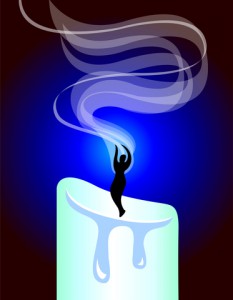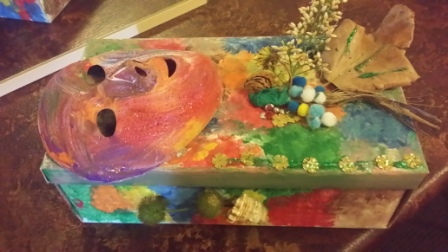Introduction

LET YOURSELF BE IN CONTACT AND IMPROVE
In contact counselling offers you confidential counselling services and treatment for a variety of issues and concerns for individuals and families. My services range from Stress, anxiety, post traumatic stress, grief and bereavement, depression. Clients will be working to improve mental health within the community and provide the resources to keep minds well with an understanding that in some cases high stressors can be associated with pre-existing trauma.

What is Counselling?
Counselling practice utilizes an interpersonal relationship to facilitate people to develop self-understanding and to make changes in life. Many people at times benefit from the insight of a Counsellor, whose training and experience equip to assist them to come to terms with life‘s issues. Counselling it is a process where a professional provides secure, confidential, nonthreatening environment where problems can be discussed, feelings can be clarified and solutions explored with support.
Counselling Service is available for:
- Individuals
- Children & Adolescence
- Adults
ONLINE THERAPY ON SKYPE
For those unable to attend counselling, we now offer online therapy for most issues. Online counselling can be especially suited if you live in a remote or regional area, if you have a very busy schedule or are unable to attend our offices due to anxiety or agoraphobia. You will be linked with a dedicated counsellor and the online therapy experience is very similar to our in rooms service and utilises the same techniques. Call us or send an enquiry from our booking form.
Approaches

Talk Therapy or face to Face:
Talk therapy, or face to face; is a general term used to describe a set of therapeutic techniques that are rooted in what psychoanalyst Sigmund Freud referred to as the talking cure. While this technique is heavily associated with psychoanalysis, it is also utilized in a range of treatment approaches including cognitive-behavioral therapy, group therapy, counselling, and client centered therapy. Talk therapy involves a client discussing problems, issues, and life events with a therapist. The goal is that by talking about these issues, the client will be able to gain insight and find relief. This approach originated in the work of Josef Breuer with his patient known as Anna O. Sigmund Freud adopted the approach and made it a central tenant of his psychoanalytic approach.
Talk therapy provide you with an experience that is therapeutic, and that empowers you to live your life more as you would like. An important element of therapy includes helping you to understand the causes of your problems and to learn and use the tools and strategies to change. This means, help you to know yourself better, and helping you to apply that knowledge effectively in your life. This could help you with the everyday pressures of your life in which to explore and understand yourself, and to gain new perspectives and vantage points on your life. It can also provide you with an important source of support and understanding. At times counselling involves a process of healing and recovery. It can also involve a process of personal evolution and growth.

Narrative therapy:
Narrative therapy holds that our identities are shaped by the accounts of our lives found in our stories or narratives. A narrative therapist is interested in helping others fully describe their rich stories and trajectories, modes of living, and possibilities associated with them. At the same time, this therapist is interested in co-investigating a problem’s many influences, including on the person himself and on their chief relationships. By focusing on problems’ effects on people’s lives rather than on problems as inside or part of people, distance is created. This externalization or objectification of a problem makes it easier to investigate and evaluate the problem’s influences. Another sort of externalization is likewise possible when people reflect upon and connect with their intentions, values, hopes, and commitments. Once values and hopes have been located in specific life events, they help to “re-author” or “re-story” a person’s experience and clearly stand as acts of resistance to problems. The term “narrative” reflects the multi-storied nature of our identities and related meanings. In particular, re-authoring conversations about values and remembering conversations about key influential people are powerful ways for people to reclaim their lives from problems. In the end, narrative conversations help people clarify for themselves an alternate direction in life to that of the problem, one that comprises a person’s values, hopes, and life commitments.
Sandplay Therapy
What is Sandplay?
It is a powerful therapeutic method that facilitates the psyche’s natural capacity for healing. In a “free and protected” space provided by a trained sandplay therapist, the client creates a concrete manifestation from his or her imagination using sand, water, and miniature objects.
Sandplay therapy is a recognized therapeutic modality for both children and adults, based on the psychology of Carl.G. Jung and developed by the Swiss psychotherapist and teacher Dora Kalff. It is particularly useful for identifying and reconciling internal conflicts that manifest as anxiety and depression, as well as penetrating the depths of personality to experience the Self directly. Sandplay therapy establishes a safe and protected space, where the complexities of the inner world are explored and integrated into the psyche for emotional healing. Clients choose to work with dry or wet sand placing miniature figurines in a sandbox to express confusing feelings and inner experiences. This creates a visual representation of the psyche’s contents and reveals unconscious concerns that are inaccessible any other way. As materials contained in the unconscious emerges visually and symbolically, it is integrated into a person’s sense of self and can be activated to elicit behavioral change. The effectiveness of sandplay therapy comes with an understanding of Jungian psychology, as well as the archetypal and personal symbolism that appear in the sand. Knowledge of symbolic language creates a foundation for sandplay therapy and all non-verbal therapies involving art and play. It provides a way for material from the unconscious to become visible, healed, and integrated into the consciousness, thus allowing life to be lived in a more conscious and authentic way.

EMDR (Eye Movement-Desensitization-Reprocessing):
The amount of time the complete treatment will take depends upon the history of the client. Complete treatment of the targets involves a three pronged protocol (1-past memories, 2-present disturbance, 3-future actions), and are needed to alleviate the symptoms and address the complete clinical picture. The goal of EMDR therapy is to process completely the experiences that are causing problems, and to include new ones that are needed for full health. “Processing” does not mean talking about it. “Processing” means setting up a learning state that will allow experiences that are causing problems to be “digested” and stored appropriately in your brain. That means that what is useful to you from an experience will be learned, and stored with appropriate emotions in your brain, and be able to guide you in positive ways in the future. The inappropriate emotions, beliefs, and body sensations will be discarded. Negative emotions, feelings and behaviours are generally caused by unresolved earlier experiences that are pushing you in the wrong directions. The goal of EMDR therapy is to leave you with the emotions, understanding, and perspectives that will lead to healthy and useful behaviours and interactions

Meditation:
Is considered an exercise during which the individual enters an extended state of contemplation and reflection over a specific subject or their general existence, sometimes with a view to attain a differing state of consciousness. Meditation, reduces tension, anxiety, irritability, depression increases alertness, serenity, concentration (likely by getting us to optimum state of arousal) increased creativity and productivity decreased blood pressure in hypertensive‘s, reduce coronary risk, reduced serum cholesterol in patients with hypercholesterolemia. reduced sleep onset for insomniacs, amelioration of stuttering decreased compulsive worrying, negative thoughts, self criticism strengthened sense of identity decreases addictive behavior (for long term mediators) Moreover religions have long used meditation as a way to gain equanimity or peace of mind. Einstein in a letter to a distraught father who had lost his young son and had asked Einstein for some comforting words wrote back: – See more at: A human being is a part of the whole, called by us “Universe”‘, a part limited in time and space. He experiences himself, his thoughts and feelings as something separate from the rest —a kind of optical delusion of his consciousness. The striving to free oneself from this delusion is the one issue of true religion. Not to nourish it but to try to overcome it, is the way to reach the attainable measure of peace of mind.” The New Quotable Einstein by Alice Calaprice (Princeton University Press, 2005: ISBN 0691120749), p. 206.

EFT (Emotional Freedom Technique) EFT:
– colloquially called “Meridian Tapping Techniques (MTT)” was created by Gary Craig and works like emotional acupressure (like acupuncture without needles) to quickly, gently and easily releases the negative emotions and beliefs that are at the root of all our problems and pain. EFT heals emotional problems by literally undoing the damage from the past. Emotional Freedom Techniques (EFT) centers on the theory that the cause of all negative emotions is a disruption in the body’s energy system. Practitioners use their fingertips (or have the client perform a tapping routine on themselves) to stimulate certain meridian energy points, on the head, face, hands and upper torso, as the client focuses on the problem or negative feelings they are harboring.

Tapping:
Resource Tapping is a simple, easily learned offshoot of EMDR Therapy for accessing your own innate healing resources. This is a tool that can be helpful for stress, anxiety, depression, or just improving your overall sense of well-being. We all have inherent reservoirs of positive stored experiences – qualities and experiences such as peace, calm, safety, love, wisdom, strength and joy. It is possible to strengthen these internal resources using this technique. When using Resource Tapping, you are simply imagining or remembering good qualities or experiences, and then adding bilateral stimulation. Bilateral stimulation in this case means tapping on the right and then the left side of your body back and forth. You can do this for yourself, or you can do it with someone else by guiding them through the instructions below and then doing the tapping for them.
Art Therapy:
Art therapy, or creative arts therapy or expressive arts therapy, encourages people to express and understand emotions through artistic expression and through the creative process. Art therapy provides the client with critical insight into emotions, thoughts, and feelings. Key benefits of the art therapy process include:

Self Box
